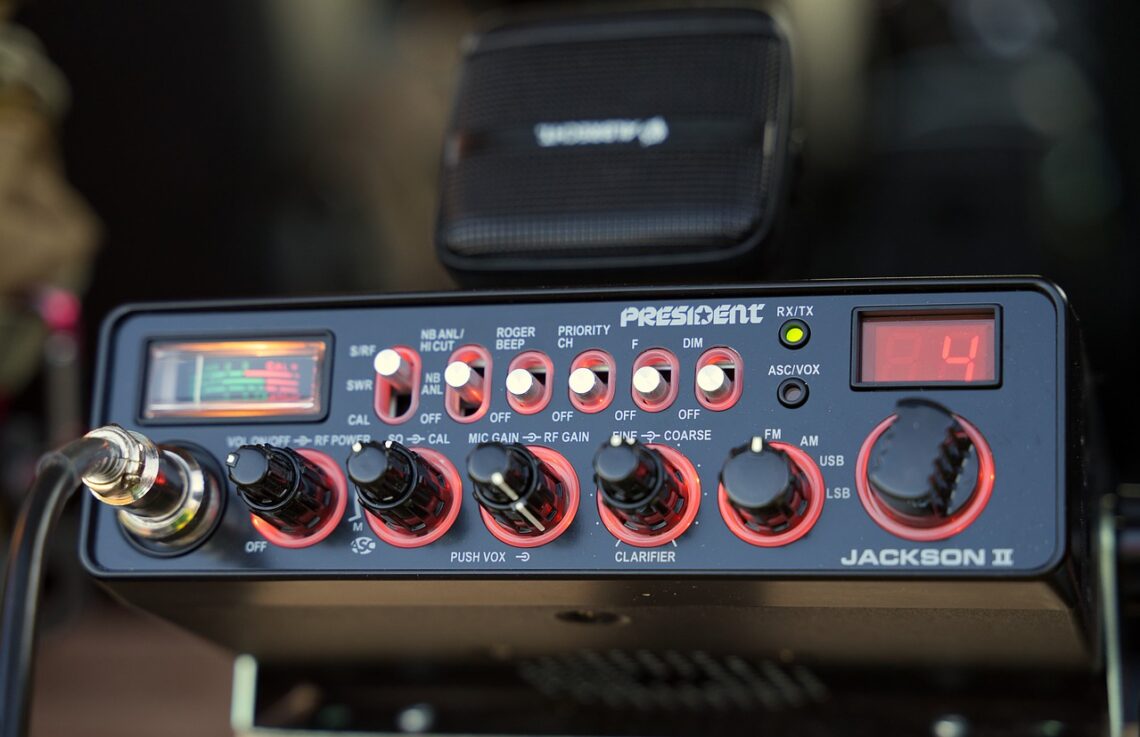In critical communication, the Citizen’s Band (CB) radio has long been a reliable and accessible means of staying connected. The allure of CB radio lies in its simplicity and ease of use, making it a popular choice for both professional drivers and hobbyists alike. Over the years, CB radio technology has evolved, offering new features and capabilities that continue to enhance its appeal. In this article, we’ll explore the advantages of not requiring a license, the introduction of FM mode, and the benefits of single sideband (SSB) for extending communication range.
Unlicensed Freedom
One of the most appealing aspects of CB radio is that users do not need to obtain a license to operate it. This lack of licensing requirements removes a significant barrier to entry, making CB radio accessible to a wide range of individuals. Whether truck drivers communicating on the road, outdoor enthusiasts staying in touch during off-road adventures, or hobbyists engaging in casual conversations, the absence of licensing formalities simplifies getting started with CB radio.
This unlicensed freedom promotes inclusivity and encourages diverse participation within the CB radio community. It allows individuals to communicate without extensive training or bureaucratic hurdles, fostering a sense of camaraderie and connectivity among users. Additionally, the lack of licensing requirements means that CB radio can serve as a valuable communication tool during emergencies or natural disasters, enabling swift and unimpeded coordination among individuals seeking assistance or providing aid.
New FM Mode
Recent advancements in CB radio technology have introduced Frequency Modulation (FM) mode, expanding the capabilities of traditional CB communication. FM mode offers several advantages over the conventional Amplitude Modulation (AM) mode, including improved audio quality and resistance to static and interference. This enhancement has significantly elevated the overall user experience, making conversations clearer and more intelligible, especially in challenging environments.
The introduction of FM mode has also contributed to the modernization of CB radio, aligning it with contemporary communication standards and ensuring compatibility with a broader range of devices. This development has invigorated interest in CB radio among seasoned users and newcomers, as the enhanced audio quality and reliability of FM mode elevate the overall communication experience. One drawback of FM is that its distance is slightly less than AM.
Single Sideband for Extended Range
Single Sideband (SSB) offers a distinct advantage in extended communication range. By utilizing SSB, CB radio users can effectively transmit and receive signals over significantly greater distances than what is achievable with traditional AM mode. With AM, the power is 4 watts, whereas SSB can use up to 12 watts. This extends the range of CB.
SSB on CB radio enables users to overcome the limitations of standard AM transmissions, allowing for more efficient and reliable long-distance communication. This is particularly beneficial for individuals operating in remote or challenging terrains, such as mountainous regions or expansive rural areas, where traditional AM 4-watt signals may struggle to reach their intended destinations.
Furthermore, SSB’s ability to reduce signal bandwidth results in heightened signal clarity and decreased susceptibility to interference, further enhancing the overall communication experience. This improved signal quality empowers CB radio users to engage in conversations more precisely and consistently, even under adverse conditions.
SSB technology has added to the potential of CB radio, expanding its utility beyond short-range interactions and establishing it as a viable communication solution for individuals seeking reliable, longer-distance connectivity.
As CB radio continues to evolve, unlicensed freedom, FM mode, and SSB technology propelled it into a new era of accessibility and functionality. In the future, messaging and modern digital communications may be added. These advancements have revitalized interest in CB radio, attracting diverse users who value its simplicity, reliability, and adaptability.





